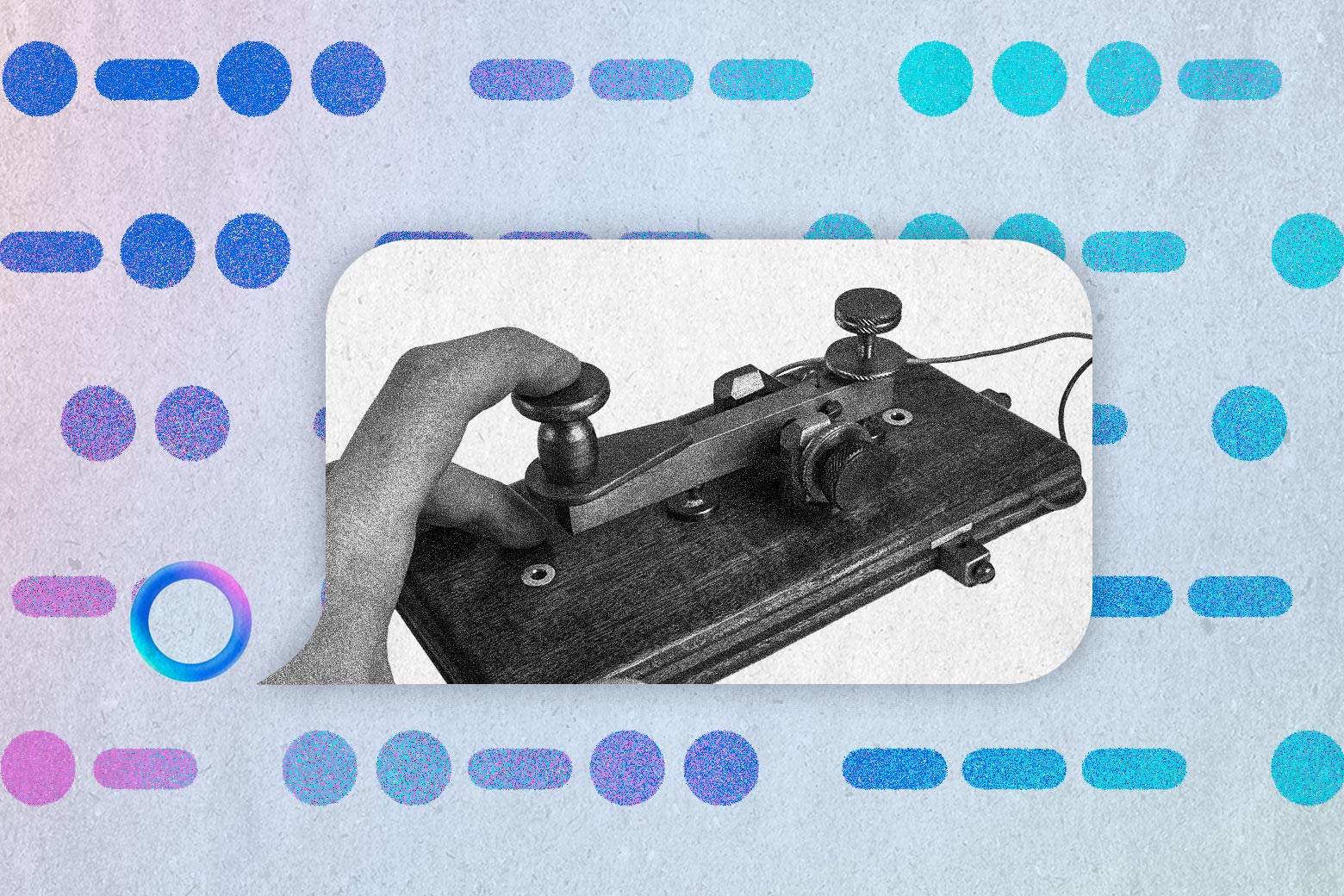“Oh, stop it—you’re making me blush,” the throaty voice said, laughing off a compliment. Barret Zoph, who’d given the compliment, looked pleased. As he should—Zoph represents OpenAI, the company behind the voice.
ChatGPT-4o, OpenAI’s most recent chatbot iteration, isn’t an improvement in appearing intelligent—it’s an improvement in appearing emotional. “We are looking at the future of interaction between ourselves and the machines,” promised Mira Murati, OpenAI’s chief technology officer.
ChatGPT-4o is just one of a wave of new conversational A.I., including the rollout of Meta AI last month. “By the end of the decade, I think lots of people will talk to A.I.s frequently throughout the day,” Mark Zuckerberg predicted upon its release. Zuckerberg’s claim (self-aggrandizing though it may be) echoes much of the research on chatbots. A 2022 study published in Computers in Human Behavior claims that these conversational A.I. technologies “can fill some of the same needs as human acquaintances” and may “soon provide personalized social support to a variety of users.”
As large language models improve, Zuckerberg and others suggest, humans will increasingly enjoy interacting with them—a shift that will perhaps even assuage the “loneliness epidemic” identified by U.S. Surgeon General Vivek H. Murthy. According to this line of thinking, technical innovation is the only thing standing in the way of consistent, fulfilling human–A.I. interaction.
However, the longer history of human communication suggests another factor: the expectations we bring to those interactions, shaped by more than 100 years of conversations with and through machines. Ever since the Victorian telegraph created real-time conversations at a distance, humans have been trying to envision the person who generated the words that they’re reading. Those imaginings have created criteria for authenticity that we bring to our interactions with chatbots today—and that transcend LLM accuracy. I don’t know if chatbot conversations will ever satisfy human loneliness, but understanding their potential requires seeing how that historical context has shaped our very human interpretations of technology.
The spread of telegraph lines during the mid-19th century presented a new possibility: Two people could have a synchronous conversation from hundreds or even thousands of miles apart. They might already know each other and enjoy this quicker form of communication, or they might be total strangers. It was the latter possibility that took hold of the public imagination.
Telegraph operators were often women, and this novel form of communication raised the specter of what we now call catfishing: luring someone into a relationship by misrepresenting oneself. The telegraph ushered in innovative opportunities for women’s independence and, with that, new metrics—and a new urgency—for differentiating the real from the fake.
For example, a headline from the Feb. 13, 1886, issue of the trade journal the Electrical World warns of “The Dangers of Wired Love.” Maggie McCutcheon, a young Brooklyn telegrapher, was “keeping up a flirtation” with Frank Frisbie, the article said. But McCutcheon’s father discovered that Frisbie was married with a family in Pennsylvania. The article details the father’s attempts to keep McCutcheon away from the wires that allow her to communicate with Frisbie, and McCutcheon’s determination to find her way to a telegraph machine.
McCutcheon’s father attempts to control her by sending her to the Catskill Mountains. He fires her from her post at his telegraph office and drags her home from a friend’s house by threatening violence. There is little mention of Frisbie other than his alleged family, who live conveniently far away. Much like a conversational A.I., he remains disembodied, amorphous, a presence only in and through the telegraph machine.
The key points of this short news story spin out in the popular fictions of the day. Often called “techno-romances,” these stories and novels elaborate on the possibilities offered by the apparatus: By stripping away the trappings of beauty, status, and family, does the telegraph make it possible to truly know someone and be known in return? Or does it introduce a new kind of forgery, the ability to pretend to be anyone, with no body for evidence?
Ella Cheever Thayer’s 1879 hit novel Wired Love: A Romance in Dots and Dashes suggests that both can be true. Recounting the courtship of two young telegraph operators, Clem and Nathalie, it shows how a bond can be formed with only words exchanged. But that doesn’t mean that expectations just evaporate for the body on the other end. Midway through the novel, Clem shows up at Nathalie’s office unannounced. Far from the handsome man she has pictured, he struts in with an “air of cheap assurance” and flashes his trinkets, reeking of cheap cologne, hair coated in bear grease. Nathalie isn’t just horrified—she feels cheated.
And it turns out she has been. The visit was just a prank by another telegraph operator, who had been eavesdropping on the communications. Ultimately, the true Clem emerges, and the couple’s love survives the move from the disembodied wires to everyday life. The possibility of a hoax remains, but the novel ends by confirming the validity of the techno-romance: Genuine connection transcends material limitations and can occur solely in words exchanged, sight unseen.
Published more than 20 years later, Henry James’ novella “In the Cage” offers a more cautionary tale. At its center, a young, unnamed telegraph operator watches as the beautiful, married Lady Bradeen sends flurries of telegrams, hoping that no one will notice the messages to the dashing Captain Everard. But the narrator—technologically astute and, by proxy, fancying herself a savvy reader of people—discerns the clandestine love story.
It might seem that disembodied communication wins the day once again, but the tale takes a turn. Lady Bradeen’s husband dies, and she presses Captain Everard to marry her, despite his loss of interest and his looming debts. The telegraph operator is shocked by what is revealed about the gross realities of high society existence. No longer bits of information transmitted over the wires, these lives take personal shape, and they feel sordid and deficient. The romance of the telegraph seduced both Lady Bradeen and the telegraph operator, but that seduction was temporary and disappointing. The novella ends with the telegraph operator leaving her “dreams and delusions” to “return to reality.”
Though the telegraph has long since been replaced, present-day interactions with chatbots are similar to those early interactions across the wires: They’re also disembodied communications that happen purely through language. As in the 19th century, when new technology is introduced, we have to reconfigure our standards for trust. The more human-seeming the chatbot, the harder it can be to bear in mind that your interlocutor doesn’t have feelings—for you or for anyone else.
As telegraph users discovered, with fresh possibilities for connection come fresh possibilities for misinformation, unhealthy dependence, even fraud. An authentic conversation with an A.I.—which has artificiality in its name—must look different from an authentic conversation with a person. Not just a skillful imitation, but an unprecedented type of interaction entirely.
Preliminary research suggests that over-reliance on conversational A.I. for social fulfillment can lead to “de-skilling,” losing the ability to connect in person because chatbots are programmed to continue the interaction. Creating chatbots in the image of human conversation may lead to a one-sided belief in the authenticity of the relationship—an unfamiliar form of fraud in which users just hurt themselves.
The past informs the assumptions and expectations we bring to conversational A.I., so with this knowledge, we can establish historically informed criteria for assessing the authenticity of a virtual relationship. Unlike the telegraph, however, there is no longer a human on the other end of the line. We need to reevaluate these mediated communications rather than turn to them as direct replacements for human contact. The techno-romance of our era is not with a stranger at the other end of the wire. Now the wire leads only to a server farm.

Michael Johnson is a tech enthusiast with a passion for all things digital. His articles cover the latest technological innovations, from artificial intelligence to consumer gadgets, providing readers with a glimpse into the future of technology.








